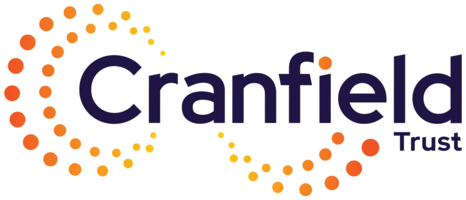Producing a board pack can be traumatic, whether you're doing it for the first time or for a new board. But it doesn't have to be. Here are nine practical tips - and one vital rule - for developing yours.
If you are new to producing a board pack then it can all seem a bit mystifying.
- What should you put in there?
- How big should it be?
- When should you produce it?
So many questions and so little time!
In this post, I wanted to touch on some of the things I have learned from producing and reading board packs over the years. I’m going to give you my top 9 tips and at the end, I will give you the single most important rule that you must abide by when you are producing your own board pack.
In this post:
- The Admin tip
- The train tip
- The delegation tip
- The size tip
- The one-pager tip
- The one about money
- The tip for the CEO
- The deadline tip
- The map tip
The one rule
Summary: focus on the strategic
1. The Admin tip
So the starting point for the board pack each month should be the standard admin things that need to go in. You’ll typically need to include an agenda and the minutes of the last meeting.
Try to agree the agenda early on with the CEO or have a standing form that the board agree with. Anything else can go in Any Other Business (AOB) or if it is a major piece then it can be added to the main agenda.
You’ll also need to include any statutory items. For example, agreeing the annual accounts or a vote on director changes. Get the admin stuff done early so you can concentrate on other things. Don’t find yourself knocking up an agenda five minutes before you have to send the pack out.
2. The train tip
When I started producing my first board packs a non-executive director took me aside and explained what he wanted to see. He said that he had limited time to work on his NED position with us and so he liked to read the board pack on the train into the office. The train journey took 30 minutes, so if he couldn’t read the pack in that time then anything at the end usually was wasted.
This lesson stuck with me and it’s doubly important for charity directors and trustees. Remember that your trustees are probably unpaid volunteers and are giving up their valuable time to sit on your board. So brevity is the key.
Don’t fill your board pack with irrelevance, make the most of the time they give you and if you can’t read it on a 30-minute train journey then it’s too long!
3. The delegation tip
One of the biggest temptations is to fill the board pack with as much information as you possibly can but this is a really bad idea. The more information you put in, the more likely it is that the trustees won’t be able to take it all in and the more likely that they will not engage with the main strategic points.
In the same way that the board should really delegate down to committees for things like finance and legal, you should delegate down the detail either to the sub-committees or to executives.
Leave the board pack for high-level, strategic information.
Remember that you can always store your documents in the cloud and give trustees access so that detailed information is available for people who want it.
4. The highlights tip
Imagine you have 5 minutes to read four pages of A4 of just text, understand the key point and then discuss it intelligently with your fellow trustees. When you are producing information for the board it is too easy to get too close to the issue at hand.
Remember you have probably been living the discussion point for a month or more and you understand it inside and out. You’ve also written up 4 pages of information about it so of course when you look at your document you know exactly what it is about.
But your trustee doesn’t get that luxury. They have limited time to read, digest and form a view on what you are presenting. So if there is a particular decision you want to be made, or you want them to be aware of a couple of issues that are of strategic importance then highlight these at the start of the pages.
Put them right at the start, and make it explicit. For example:
“The purpose of this paper is to bring the trustees attention the possible effects of a rent increase in our high street shops”
Or
“We are asking trustees to decide whether we should spend more money on advertising this quarter”.
This way the trustee knows right upfront what you want, what information they need and what insight they are expected to provide.
5. The one-pager tip
The aim of papers that you present to the board should be to give information and spark discussion. So I always think that you should be able to say what you want to say about a specific subject on a single page of A4.
Be ruthless about editing. When you are writing yet another paragraph about the conversion rates of website visitors ask yourself whether this actually adds to the conversation or not. If not; delete.
This is a really good tip because it forces the person producing the paper to really focus tightly on the key points they need to make. Now please bear in mind that I am not advocating keeping information away from your trustees, far from it and if you really have to add more then by all means do.
You can make granular information like finance or marketing data available separately (in your cloud storage area) but the detail isn’t for the board meeting.
Remember that in a board setting, each report should be presented by someone who can talk to the information behind the one-pager. So if someone really does want to know the comparative merits of different web conversion rates then you can tell them.
I promise you, your trustees will thank you for this.
6. The one about money
So as an accountant I fully understand the need to give people as many numbers as I possibly can. Strangely my fellow trustees are often not that enthusiastic!
It is always tempting as a finance person to think that the more numbers you are giving people then the more information you are providing, but you couldn’t be more wrong. Actually, overloading ‘non-numbers’ people with loads of data actually causes them to shut down and disengage.
A really good finance person will understand that you shouldn’t seek to deliver numbers but insight.
Whenever I am working with a charity my aim is to produce a one-page financial summary that tells them whether things have been OK in the past, whether they are now OK and whether they are likely to be OK in the future. Anything else is just me showing off.
Yes, it makes me feel smart that I can tell people exactly what’s behind the numbers on the P&L and that I understand accruals and tax assets but that doesn’t add anything to the conversation at all.
Save it for the finance sub-committee.
7. The tip for the CEO
You’re proud of your organisation, after all, you live it day in and day out.
You want to tell the trustees about all the good work that your people have done because you are justifiably thrilled with the work you and your team have produced.
But you need to reign in the detail a bit. Remember that the board meeting is a place for strategic direction and not deciding which broadband provider you use.
Give your trustees some good news stories about the impact that your work has had by all means, then speak about the strategic direction you want to go in. The CEO’s report should include an overview of what has happened, what you are wanting to do in the future and what resources you will need to achieve this.
Ask directors for specific input or to make decisions. Tell them what output you want from your meeting.
8. The deadline tip
Nothing annoys me more than getting board papers actually at the meeting. I don't have time to read them let alone give any constructive insight. So you need to set deadlines so that trustees aren’t put in this difficult position.
Have a deadline for when you will get the minutes of the last meeting produced. Have a deadline for agenda items, have a deadline for board papers. If they haven’t been produced by your deadline then they don’t go in the pack.
Then set yourself a deadline for sending out the pack to trustees. There is a trade-off here because if you send it out too early then the information can be out of date, too late and people don’t have time to read it.
Generally, I like to have a weekend between board pack production and the meeting so that we working trustees can read it over a cup of coffee on a Sunday morning.
9. The map tip
Nothing is worse than being presented with a bundle of papers or being sent 30 Pdfs with no clear structure. You have to give your trustees a method of navigating their way around the board pack.
This can be as simple as having a contents page and of course, numbering the pages or you can use commercial pack software but whatever you do, at least give us a chance!
We need to be in a position where when we are sitting in the meeting we can instantly find the information we are looking for.
Hint: this is much easier if you implement the one-pager tip.
The one rule
So finally we get to the point where you get to learn the single most important rule that you must abide by when producing your board pack.
It’s simple, it’s useful and it will save you a lot of trauma in the future!
The one rule you need to remember is that when you are producing your board pack, there are no rules.
Yep.
There are no rules because a board pack is a management document, so if it makes sense and is useful for your board then it’s allowed. You can put what you want in it, you can deliver it electronically, on paper or using the medium of dance if you wish.
So don’t be hamstrung by the thought that you are somehow doing something wrong by including a page of feedback from service users or photos from a recent open day. And don’t compare your board pack to another organisation. Ever.
Your board pack is for you, their board pack is for them and never the twain shall meet.
- Resist the strong-willed trustee who tells you that you absolutely “have to have” a 40-page financial report in your pack.
- Withstand your experienced trustee who tells you that at a big charity they volunteered at they “always did it like that”.
- Push back when your CEO says that there is a rule meaning you have to only ever produce a board pack on paper.
The rule is, if it is useful for the WHOLE BOARD then it gets in, if not then it goes to a committee or is made available elsewhere as background reading.
Summary - focus on the strategic.
I hope this post has proved useful for you.
I’ve written this in a light-hearted manner simply because I think it is wrong to get overly stressed about the formats, structure and contents of a board pack.
The overarching message has to be that there are no rules, only best practices. What’s important is that your trustees are getting the information they need in a way that is useable and allows them to form reasonable opinions on the state of the organisation.
Timely insights about the organisation allied to clear statements about what output you are looking for really help when the meeting is in full flow.
So concentrate on your editing, focus on the strategic and delegate the detail to committee papers.
Good luck with producing your own board pack.

Our thanks to our volunteer Stuart Walker for sharing his knowledge and insight on preparing charity board papers.
About the author
Stuart Walker MBA, ACMA, is a business writer specialising in SaaS, Fintech and Financial Services. Stuart is a Cranfield Trust volunteer based in the south west and uses his accountancy and finance expertise and skills to guide our charity clients with all aspects of financial control, planning and forecasting.








